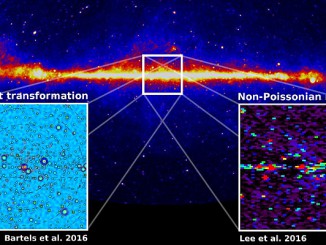
millisecond pulsars




Experiment devoted to neutron star research installed on space station
A NASA instrument built to help astronomers learn about the structure and behaviour of neutron stars, super-dense stellar skeletons left behind by massive explosions, has been mounted to an observation post outside the International Space Station after delivery aboard a SpaceX supply ship earlier this month.

Millisecond pulsars in globular cluster 47 Tucanae
Pulsars are rapidly spinning neutron stars that emit electromagnetic radiation in a sweeping, lighthouse-like beam. They are dramatic, powerful probes of supernovae, their progenitor stars. Astronomers have measured the orbital parameters of four millisecond pulsars in the globular cluster 47 Tucanae and modelled their possible formation and evolution paths.

Gravitational wave search provides insights into galaxy mergers
New results from NANOGrav — the North American Nanohertz Observatory for Gravitational Waves — establish astrophysically significant limits in the search for low-frequency gravitational waves. This result provides insight into how often galaxies merge and how those merging galaxies evolve over time.

Neutron stars, not dark matter, may explain Milky Way’s gamma-ray excess
It has been suggested that gamma rays coming from the dense region of space in the inner Milky Way galaxy could be caused when invisible dark matter particles collide, but two new studies suggest that the gamma ray bursts are due to other astrophysical phenomena such as fast-rotating stars called millisecond pulsars.

Discovery of white dwarf companions of millisecond pulsars
When a massive star ends its life in a spectacular supernova explosion, it can leave behind a rapidly spinning neutron star with a period of 1-10 milliseconds. Such objects that emit electromagnetic radiation in a lighthouse-like beam sweeping past the Earth are known as millisecond pulsars. CfA astronomers have identified white dwarf companions of two more millisecond pulsars in the spectacular globular cluster 47 Tucanae.

